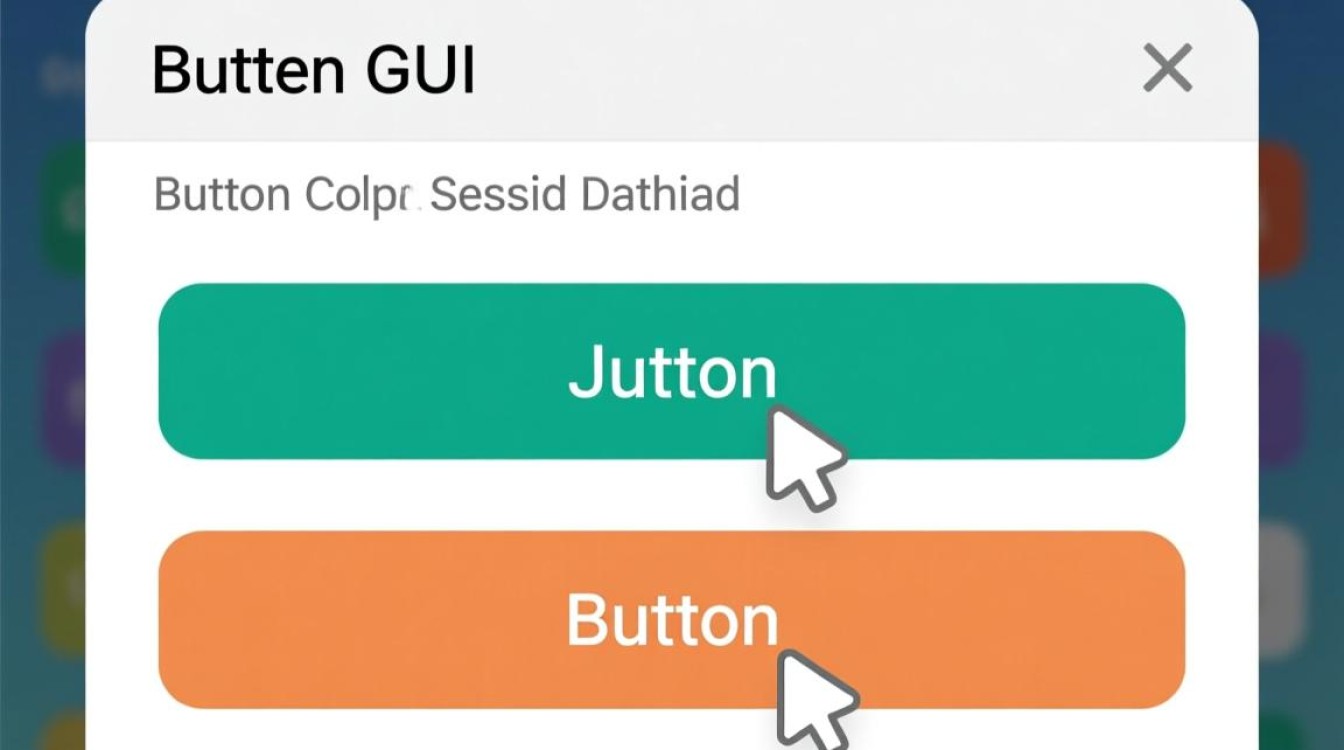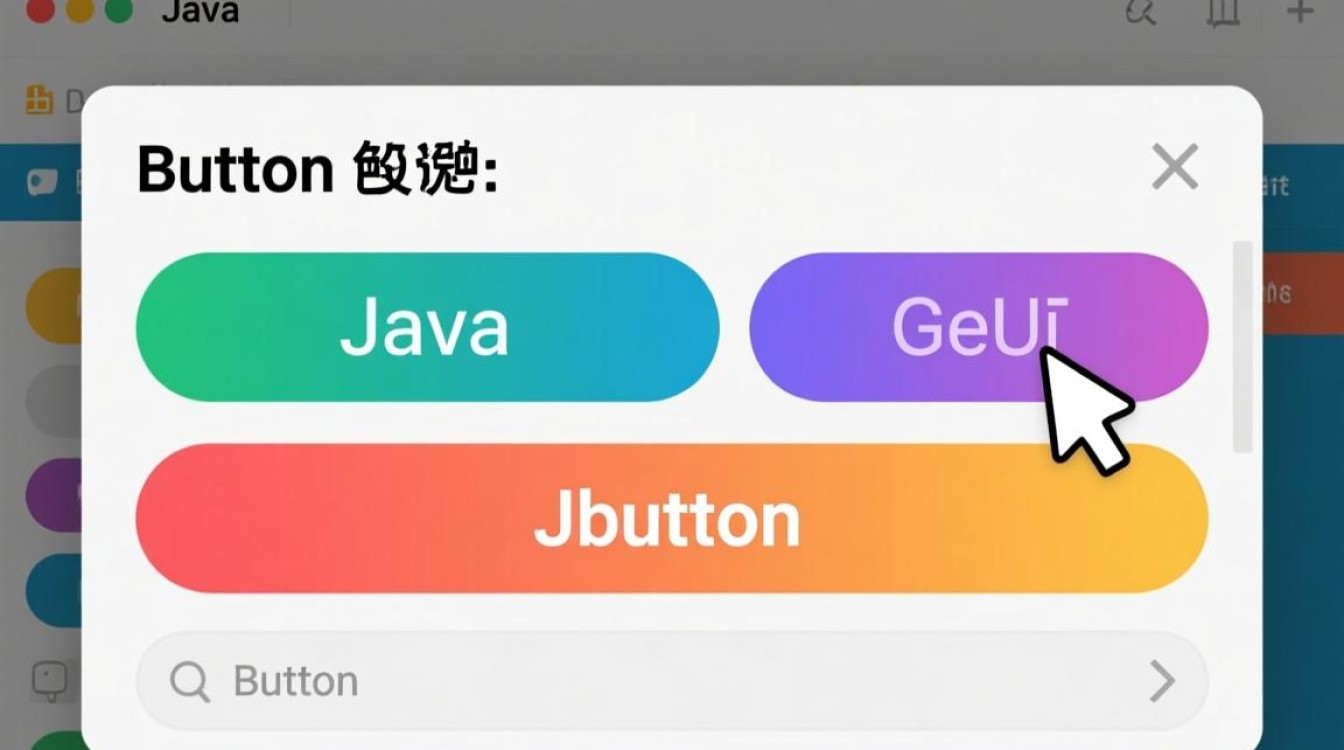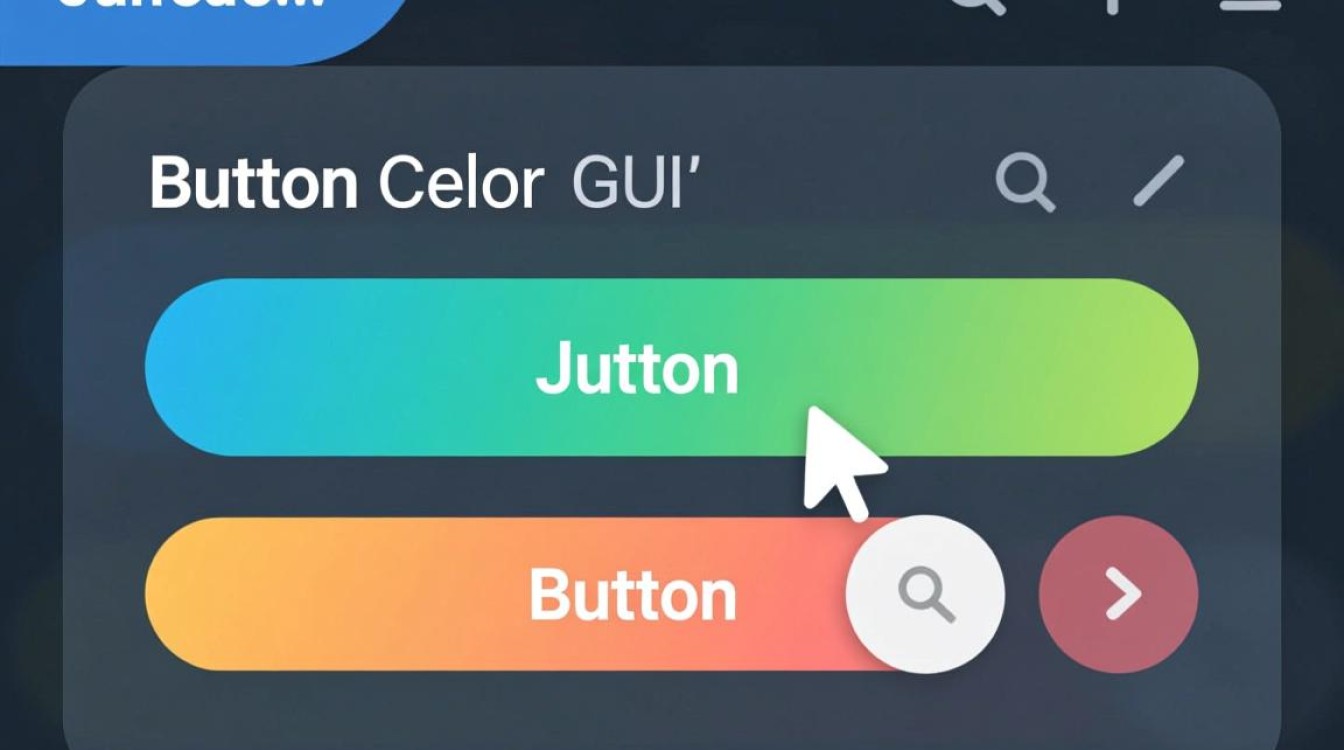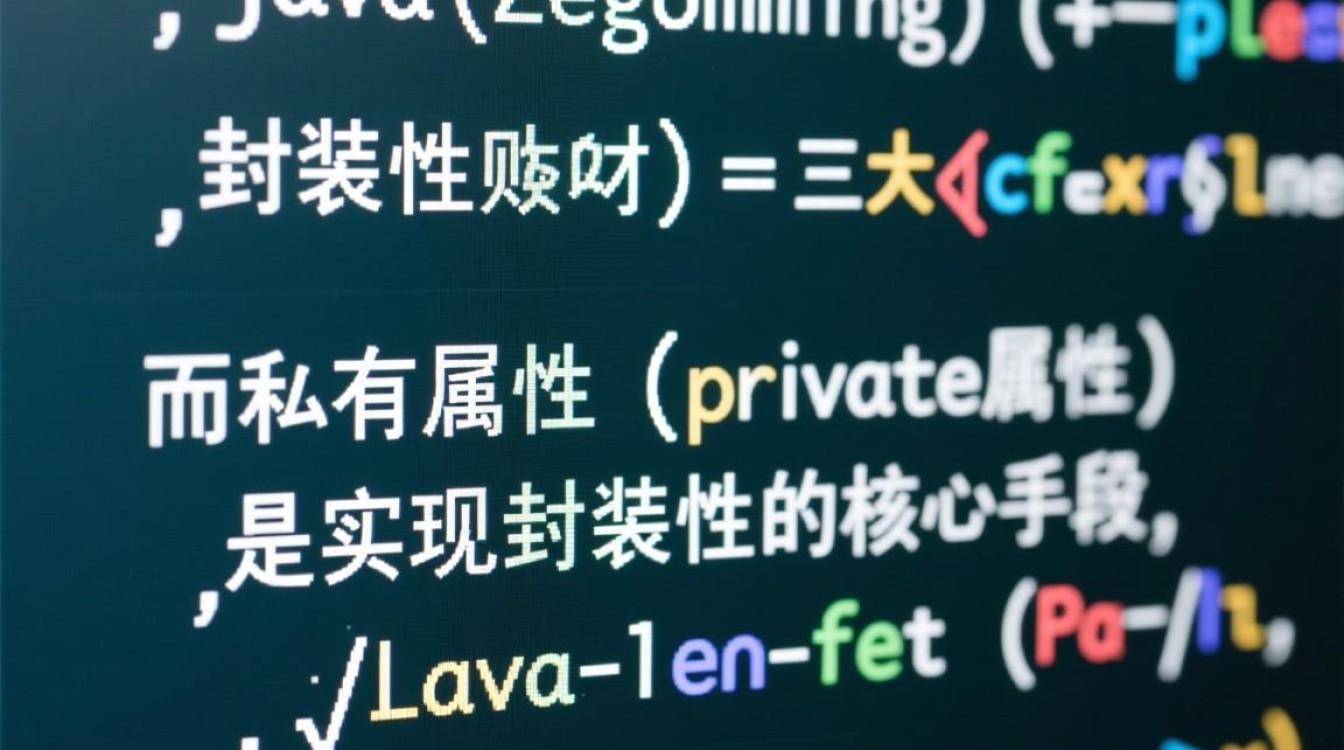Java中按钮颜色设置的基础方法
在Java GUI开发中,按钮(JButton)是最常用的交互组件之一,设置按钮的颜色不仅能提升界面的美观度,还能增强用户体验,Java提供了多种方式来设置按钮的颜色,包括背景色、前景色(文字颜色)、边框颜色等,本文将详细介绍这些方法,并通过代码示例帮助读者理解具体实现。

使用setBackground()和setForeground()方法
Java Swing中的JButton类继承自AbstractButton,提供了直接设置背景色和前景色的方法。
- setBackground(Color color):用于设置按钮的背景颜色。
- setForeground(Color color):用于设置按钮上文字的颜色。
import javax.swing.*;
import java.awt.*;
public class ButtonColorExample {
public static void main(String[] args) {
JFrame frame = new JFrame("按钮颜色示例");
frame.setSize(300, 200);
frame.setLayout(new FlowLayout());
JButton button = new JButton("点击我");
button.setBackground(Color.BLUE); // 设置背景色为蓝色
button.setForeground(Color.WHITE); // 设置文字颜色为白色
frame.add(button);
frame.setDefaultCloseOperation(JFrame.EXIT_ON_CLOSE);
frame.setVisible(true);
}
}
使用UIManager设置全局按钮颜色
如果希望所有按钮默认使用特定颜色,可以通过UIManager类设置全局样式。
import javax.swing.*;
import java.awt.*;
public class GlobalButtonColor {
public static void main(String[] args) {
UIManager.put("Button.background", Color.GREEN);
UIManager.put("Button.foreground", Color.BLACK);
JFrame frame = new JFrame("全局按钮颜色");
frame.setSize(300, 200);
frame.setLayout(new FlowLayout());
JButton button1 = new JButton("按钮1");
JButton button2 = new JButton("按钮2");
frame.add(button1);
frame.add(button2);
frame.setDefaultCloseOperation(JFrame.EXIT_ON_CLOSE);
frame.setVisible(true);
}
}
通过自定义UI实现更灵活的颜色控制
Swing允许开发者通过继承BasicButtonUI类或实现UIDelegate接口来自定义按钮的绘制逻辑,这种方法可以实现渐变色、透明效果等复杂样式。

import javax.swing.*;
import java.awt.*;
public class CustomButtonUI {
public static void main(String[] args) {
JFrame frame = new JFrame("自定义按钮UI");
frame.setSize(300, 200);
frame.setLayout(new FlowLayout());
JButton button = new JButton("渐变按钮");
button.setUI(new GradientButtonUI());
frame.add(button);
frame.setDefaultCloseOperation(JFrame.EXIT_ON_CLOSE);
frame.setVisible(true);
}
}
class GradientButtonUI extends BasicButtonUI {
@Override
public void paint(Graphics g, JComponent c) {
AbstractButton button = (AbstractButton) c;
Graphics2D g2d = (Graphics2D) g.create();
g2d.setRenderingHint(RenderingHints.KEY_ANTIALIASING, RenderingHints.VALUE_ANTIALIAS_ON);
// 绘制渐变背景
GradientPaint gradient = new GradientPaint(
0, 0, new Color(255, 0, 0),
0, button.getHeight(), new Color(0, 0, 255)
);
g2d.setPaint(gradient);
g2d.fillRect(0, 0, button.getWidth(), button.getHeight());
// 绘制文字
g2d.setColor(Color.WHITE);
g2d.setFont(new Font("Arial", Font.BOLD, 14));
FontMetrics metrics = g2d.getFontMetrics();
int x = (button.getWidth() - metrics.stringWidth(button.getText())) / 2;
int y = (button.getHeight() - metrics.getHeight()) / 2 + metrics.getAscent();
g2d.drawString(button.getText(), x, y);
g2d.dispose();
}
}
使用CSS样式(JavaFX)
如果使用的是JavaFX,可以通过CSS样式表更灵活地设置按钮颜色。
import javafx.application.Application;
import javafx.scene.Scene;
import javafx.scene.control.Button;
import javafx.scene.layout.StackPane;
import javafx.stage.Stage;
public class JavaFXButtonColor extends Application {
@Override
public void start(Stage primaryStage) {
Button button = new Button("JavaFX按钮");
button.setStyle("-fx-background-color: #4CAF50; -fx-text-fill: white;");
StackPane root = new StackPane();
root.getChildren().add(button);
Scene scene = new Scene(root, 300, 200);
primaryStage.setTitle("JavaFX按钮颜色");
primaryStage.setScene(scene);
primaryStage.show();
}
public static void main(String[] args) {
launch(args);
}
}
动态改变按钮颜色
在某些场景下,可能需要根据用户操作动态改变按钮颜色,点击按钮后切换颜色。
import javax.swing.*;
import java.awt.*;
import java.awt.event.ActionEvent;
import java.awt.event.ActionListener;
public class DynamicButtonColor {
public static void main(String[] args) {
JFrame frame = new JFrame("动态按钮颜色");
frame.setSize(300, 200);
frame.setLayout(new FlowLayout());
JButton button = new JButton("点击变色");
button.setBackground(Color.ORANGE);
button.setOpaque(true);
button.addActionListener(new ActionListener() {
@Override
public void actionPerformed(ActionEvent e) {
// 随机生成颜色
Color randomColor = new Color(
(int) (Math.random() * 256),
(int) (Math.random() * 256),
(int) (Math.random() * 256)
);
button.setBackground(randomColor);
}
});
frame.add(button);
frame.setDefaultCloseOperation(JFrame.EXIT_ON_CLOSE);
frame.setVisible(true);
}
}
注意事项
- setOpaque(true):如果按钮背景色未正确显示,可能需要调用
button.setOpaque(true)以确保背景色生效。 - 跨平台一致性:不同操作系统可能对按钮渲染有差异,建议测试多平台效果。
- 性能优化:频繁重绘按钮可能影响性能,避免在动画或高频事件中使用复杂自定义UI。
Java中设置按钮颜色的方法多种多样,从简单的setBackground()到复杂的自定义UI,开发者可以根据需求选择合适的方案,Swing适合传统桌面应用,而JavaFX则提供了更现代化的CSS样式支持,掌握这些技巧,能够帮助开发者创建更具吸引力的用户界面。




















